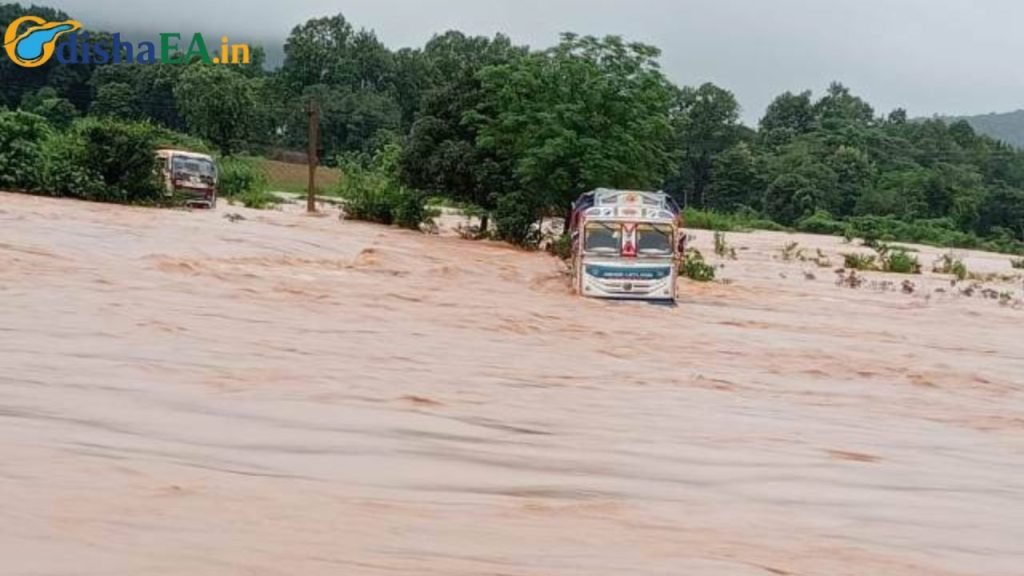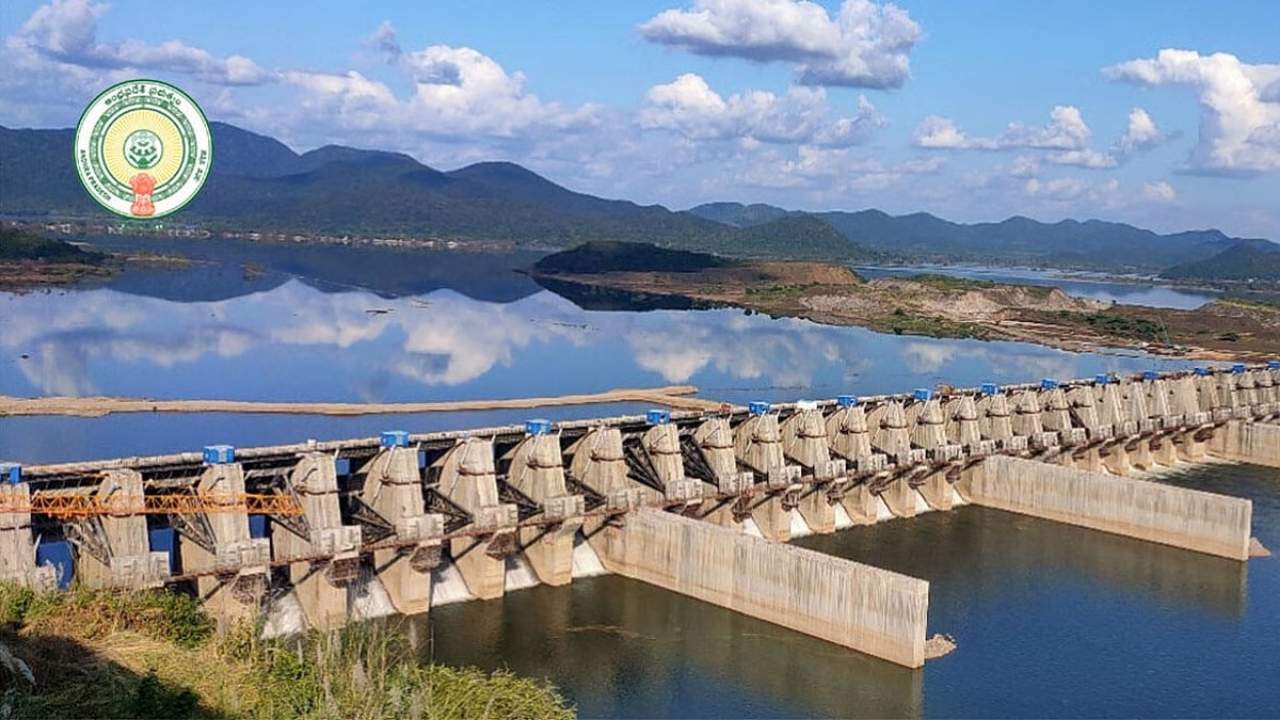In a stunning and terrifying incident in Sundargarh, Odisha, dramatic footage recently surfaced showing a truck being swept away by raging flash floods. This powerful event has sparked concern across the region, highlighting the devastating impact that extreme weather events are having on communities. The footage is both awe-inspiring and heart-wrenching, showing just how vulnerable communities are when flash floods hit.
Flash floods are fast-moving floods caused by sudden heavy rainfall or the rapid melting of snow. These floods can occur with little warning, and their power can be enough to carry away vehicles, houses, and even entire communities. In the case of Sundargarh, the truck’s tragic fate demonstrates the sheer force of nature and the need for better flood preparedness and response.

In this article, we’ll dive into the details of this dramatic incident in Sundargarh, explore the causes of flash floods, and discuss what individuals and communities can do to stay safe during these extreme events. We’ll also provide insights on how to prepare for flash floods, including practical advice and resources for residents of flood-prone areas.
Dramatic Footage Shows Truck Carried Away by Flash Floods
| Key Point | Details |
|---|---|
| Incident Location | Sundargarh, Odisha, India |
| Key Event | Truck swept away by flash floods |
| Primary Cause | Heavy rainfall leading to swollen rivers, particularly the Brahmani and Baitarani rivers |
| Impact Areas | Jangla, Jakeikela, Lalei in Bonai block severely affected |
| Damage Caused | Roads submerged, transportation disrupted, and several villages isolated |
| Official Resources | India Meteorological Department and NDMA |
| Safety Measures | Emergency flood preparedness tips |
| Historical Data | 2019 floods in Odisha led to over 1,500 people affected, highlighting the region’s vulnerability to flash floods |
| Prevention Tips | Early warning systems, flood-resistant infrastructure, community education, and government coordination |
Flash floods are a reminder of nature’s raw power, and the truck incident in Sundargarh is a stark example of the devastation they can cause. While these floods are difficult to predict and impossible to stop, there are steps that we can all take to prepare and protect ourselves.
By understanding the risks, preparing an emergency kit, staying informed, and having an evacuation plan, you can ensure the safety of yourself and your loved ones when the unexpected strikes. Communities and local governments also have an important role in reducing the impact of flash floods by improving infrastructure, investing in early warning systems, and promoting awareness about flood risks.
In the face of increasing climate change, it’s vital to stay ahead of the storm and prepare for the worst. Through knowledge, preparation, and action, we can minimize the impact of these destructive forces and protect ourselves from the next flash flood.
Understanding Flash Floods: The Forces Behind the Destruction
Flash floods are unpredictable and deadly. They occur when there is an excessive amount of rain in a short period, causing rivers, streams, and creeks to overflow rapidly. These floods can develop within six hours of a heavy rainfall event and can travel at incredible speeds, carrying anything in their path, including vehicles, debris, and even entire buildings.
In Sundargarh, the truck incident was a direct result of a sudden surge of water caused by incessant rainfall. The local rivers, notably the Brahmani and Baitarani, swelled beyond their banks, inundating villages and blocking roads. In some areas, floodwaters rose so high that entire families were trapped in their homes, unable to escape.
The Science of Flash Floods
Flash floods occur due to several factors, but most commonly because of heavy rain in a short period, poor drainage systems, and the inability of the ground to absorb water quickly enough. These floods can be exacerbated by deforestation, urbanization, and the construction of poorly planned infrastructure that lacks sufficient drainage or flood mitigation measures.
The problem is even more severe in regions like Sundargarh, where local rivers are prone to swelling during the monsoon season. Heavy rainfall, often linked to tropical storms or low-pressure systems, can increase the amount of water flowing into rivers, causing them to overflow. When the flow of water exceeds the capacity of drainage systems and natural basins, floods can occur rapidly.
How Flash Floods Impact Communities: Real-World Examples
Flash floods in Sundargarh are not isolated incidents. In the past, other regions in Odisha have experienced similar devastating effects. For instance, in 2019, Odisha faced catastrophic flooding due to heavy rains, which submerged villages and left thousands displaced. According to the India Meteorological Department (IMD), such rainfall events are expected to increase due to climate change, making it more important than ever for residents to understand how to prepare for floods.
In Sundargarh, the flash floods not only swept away the truck but also cut off vital roads, isolated villages, and led to massive disruptions in daily life. Villagers in areas like Jangla, Jakeikela, and Lalei were trapped, with floodwaters rising dangerously high around their homes.
This situation emphasizes the importance of having a well-coordinated flood response system. According to National Disaster Management Authority (NDMA), the key to minimizing damage from flash floods is early warning, community education, and effective evacuation plans.
Preparing for Flash Floods: A Step-by-Step Guide
Flash floods are dangerous, but there are practical steps you can take to stay safe. Here’s a comprehensive guide to help individuals, families, and communities prepare for and respond to flash floods.
Step 1: Know the Risks
Start by understanding whether you live in a flood-prone area. Many regions, especially near rivers or low-lying lands, are more susceptible to flash flooding. You can check local flood risk maps provided by government agencies like IMD or NDMA. Stay informed about weather forecasts, especially during the monsoon season.
Step 2: Prepare an Emergency Kit
Every household should have an emergency flood kit. Here’s what to include:
- Non-perishable food and bottled water for at least three days
- First aid supplies, including bandages, antiseptic, and medications
- Flashlights and extra batteries
- Important documents in waterproof bags (ID, insurance, etc.)
- Portable phone charger
- Clothing and blankets for warmth
- Cash in small denominations (ATMs may be unavailable)
Step 3: Have an Evacuation Plan
It’s crucial to know where to go if you need to evacuate. Identify the highest point in your area or the nearest evacuation center. Plan a safe route to reach that point, and make sure everyone in your family is familiar with the plan. Consider preparing a meeting spot if your family gets separated during the flood.
Step 4: Secure Your Property
If you live in a flood-prone area, consider building flood-resistant infrastructure like elevating your home or installing sewer backflow valves. Raise electrical outlets and appliances above expected flood levels. Clear gutters and drains regularly to prevent blockages.
Step 5: Stay Informed
Listen to weather alerts from the IMD and local authorities. Modern technology makes it easier than ever to receive timely notifications about severe weather. Ensure that you have a reliable battery-powered or hand-crank radio if power goes out.
Step 6: Evacuate Quickly
If a flash flood warning is issued, evacuate immediately. Don’t wait until it’s too late to move your family to higher ground. Follow emergency routes and avoid areas that are already flooded. Never drive through floodwaters, as they can easily carry away vehicles.
Odisha Plans 800 New Shelters to Combat Cyclones and Floods, Centre’s Aid Requested
Odisha’s Weather Alert: Flood-Prone Zones to Face Rain Till August 19
Floods Devastate Kendrapara Agriculture: Paddy Saplings, Vegetable Crops Damaged
FAQs
What is the difference between a flood watch and a flood warning?
A flood watch means conditions are favorable for flooding, but it hasn’t happened yet. A flood warning, on the other hand, means flooding is imminent or already occurring. You should always take immediate action during a flood warning.
How fast can flash floods occur?
Flash floods can occur within six hours of a heavy rainstorm or a sudden change in weather conditions. In some cases, they can occur even faster, within minutes.
What should I do if I am trapped during a flash flood?
If you are trapped, stay calm and seek higher ground. If you’re in a car, abandon it immediately and move to higher ground. Never try to cross floodwaters, even if they appear shallow.





